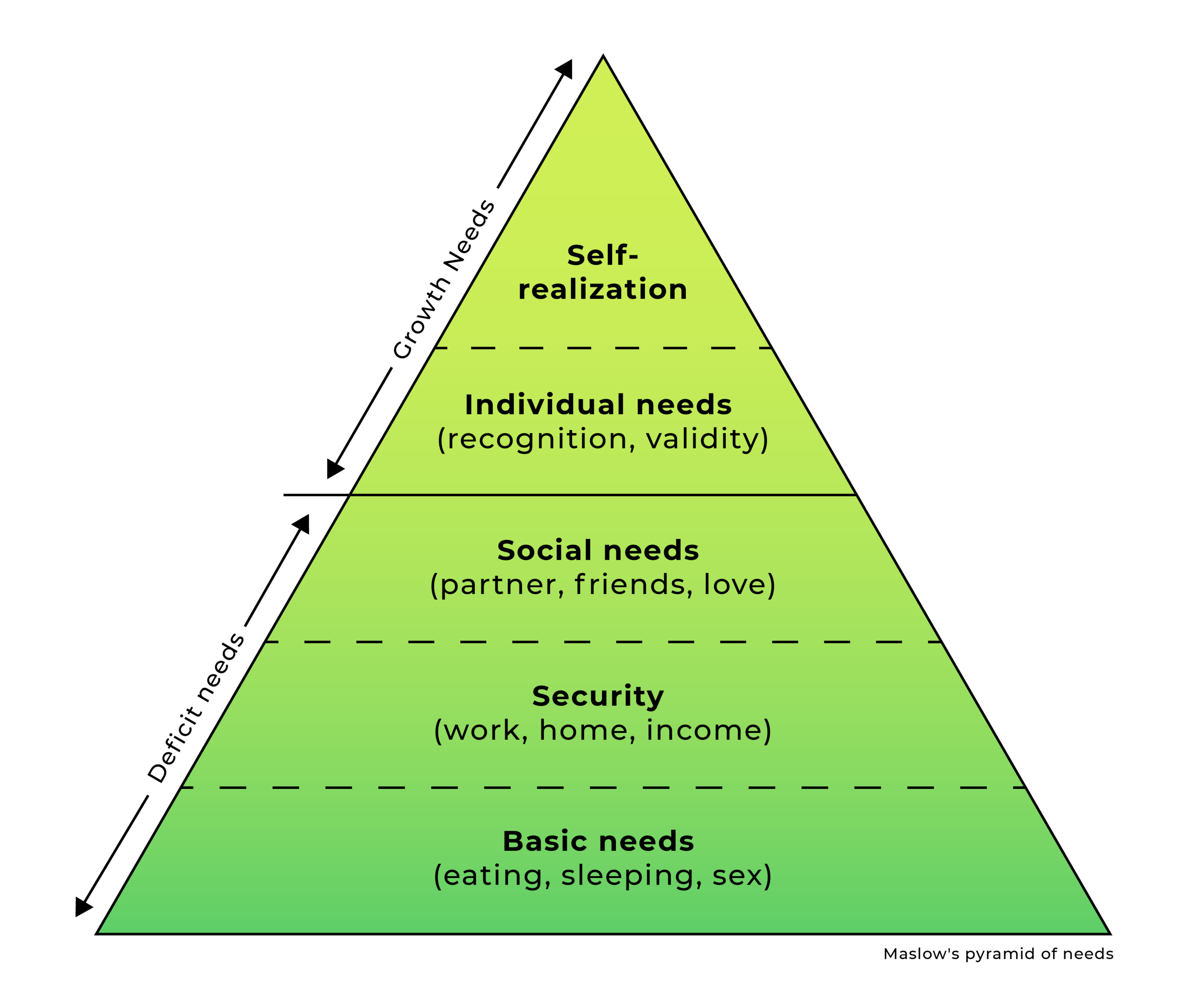Why is identifying and incorporating user needs into your own product so incredibly important? Do you have to deal with user needs for the development of your product? And if so, why? Which needs are relevant for usability and user experience design? How can they be considered and incorporated into the design?
If you have already asked yourself one or more of these questions, this series of articles is for you. By reading our needs series, you’ll gain an understanding of why user needs are so essential to your own product design. You’ll also learn about the most important needs in terms of usability and user experience design. This will help you lay the foundation for a product that inspires and retains users for a long time.
At the end of this series, you will be able to answer the essentially important question “What makes a product really cool and inspiring?” and know about the first steps you can take to make your own product inspiring. In other words, you’ll learn how to use psychological product design to meet one or more of the most important human needs, ensuring that your product evokes positive emotions in the user.
Introduction:
The knowledge about the importance of good usability in products has arrived in most companies today. The terms usability and user experience are now part of the standard repertoire of many companies, and many larger companies now have their own departments whose job it is to ensure simply designed products. That’s a good thing!
But it should not stop there. It is not enough to develop an easy-to-use product if you want to inspire users. Enthusiasm, i.e. a very good user experience, needs emotions. Good operability (i.e. good usability) alone creates the basis for this, but no more than that. That’s why we’ll take a closer look at user experience from the perspective of the world of psychology. We want to understand what users want, what motivates them, and what makes them perceive product use as very positive.
Products trigger emotions in users
Products that the media and bloggers report on, that people camp out in front of stores for days on end for, and that are written about daily months before they go on sale, are not “just” simple. Sometimes they are even purposefully the opposite. But they always do one thing: they trigger emotions in users. And emotions arise from the satisfaction of needs. That’s why, in the blog series we’re launching herewith, we’d like to take a look at needs when dealing with technical products.
The value of needs and how they can be considered in daily work through good design and some design patterns will therefore be the core of this series.
We hope to give you, dear reader, the same “aha” experience as the clients we work with on these topics.
We would be delighted if you would ask yourself for your next product not only, “How can I make it as simple as possible?” but perhaps also, “What needs do my users have and how can I take them into account in my product?”
However, it’s not just the period of actual use that is crucial to the user experience. Everything that happens before and after use and is related to your product is also enormously important here. This can be an attitude of expectation, but also a satisfied feeling after use – user experience thus considers people holistically in their perception!
And what needs exactly are we talking about?
To this day, Maslow’s pyramid of needs is one of the best-known and most common attempts to explain the hierarchy of human needs and the resulting motivation for people to act. Over the years, however, it has often been criticized for being “too abstract”. Also the boundary of the motivation classes, which Maslow assumes, could not be scientifically proven. (source) In very simplified terms, it states that people must see certain deficit needs (basic needs, security, social needs) as fulfilled before they can devote themselves to the implementation of growth needs (individual needs and self-actualization).

Over the decades, researchers have repeatedly devoted themselves to needs research. One such researcher was Dr. Kennon Sheldon, who conducted a study in which he asked people about the most satisfying moments in their lives in order to derive the most important psychological needs. He and his team elaborated in their publication, “What Is Satisfying About Satisfying Events? Testing 10 Candidate Psychological Needs” a variety of other psychological needs. Chief among these were: Autonomy, Competence, and Relatedness.
These are already far more interesting for psychological product design, because if your product serves one or more of these most important human needs, using it will evoke positive emotions. That’s why we will focus on just these most important needs. At this point it is worth mentioning that needs are expressed differently in people.
But which needs are important for the usability and user experience design of your product? From our point of view, the following shortened list by Sarah Diefenbach and her team summarizes very well the needs that can be relevant in the context of technology use and contribute to a good user experience. (source: “Experience Design Tools – Approaches to Interaction Design from the Perspective of Psychological Needs“)
A short round of introductions: the most important needs in technology use briefly explained once
Let’s briefly get to know the needs. The following weeks, we will cover each of them in depth with a separate article and derive clear design patterns from each need that will help you in your product design.
We have taken the following list and the explanation of the needs from the mentioned article by Sarah Diefenbach:
Competence: the need to face and overcome challenges. The experience of success and self-efficacy plays a role here.
Connectedness: The need to feel close to others, especially the people who are important to you. It is about feeling socially included and close.
Meaningfulness: The need to hold meaning and gain new insights.
Stimulation: The need to learn new things. Curiosity, entertainment, or distraction often play a role here.
Security: The need to be able to plan things and to be safe from threat and uncertainty. It is about a feeling of relaxation through planning and structure.
Popularity: The need to be recognized by others, to be someone others find interesting or emulate. Fame and responsibility play a role here, but also power and influence.
Autonomy: The need to be able to decide things freely. Self-determination, autonomy and independence play a role here.
(source: “Experience Design Tools – Approaches to Interaction Design from the Perspective of Psychological Needs“)
From abstract to concrete
Needs thus show what people strive for. However, the formulation of needs is abstract and general. When designing technology, however, the question then arises of how you use the abstract needs for your very concrete product. The needs can provide you with concrete clues here. For example, the autonomy need can “result” in the implementation of being able to solve a previously cooperatively solved work step on your own now.
Conclusion
Meeting user needs creates positive emotions when using your product. Accordingly, it is essential to be clear about user needs and develop an understanding of what you can do to incorporate them into your product design as well.
Do you have any experience with psychological product design? Let us know in the comments.
Have questions about incorporating user needs in your specific case? Feel free to get in touch via our contact form and arrange a free get-to-know-you meeting with us.
We are very much looking forward to your feedback!
Our need series
Here is our overview of the articles in the series:
Part 1: Introduction
Part 2: Connectedness
Part 3: Security
Part 4: Competence
Part 5: Popularity
Part 6: Stimulation
Part 7: Autonomy
Part 8: Meaningfulness



